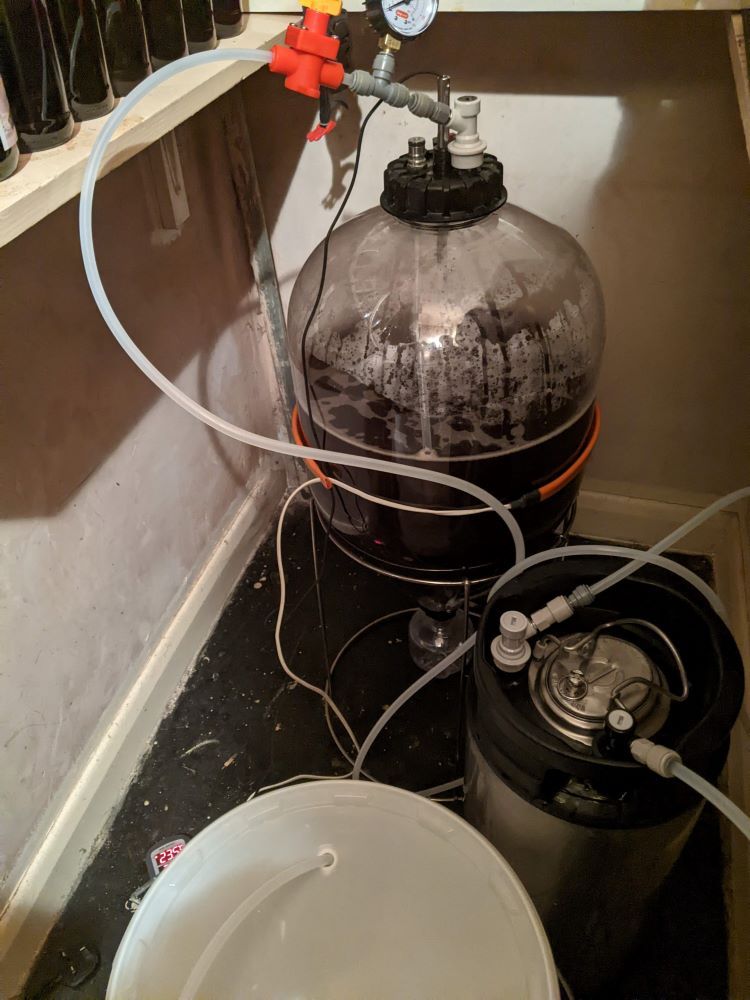Festival Father Hooks
Festival Father Hooks with free Co2

When I embarked on my brewing journey, I initially planned to employ the technique of utilizing the naturally generated CO2 from the fermenter to purge a meticulously cleaned keg filled with sanitizer. This approach would ensure that the transfer to the keg would be free from oxygen exposure, thereby preserving the quality of my brew.

As I began the brewing process, I followed the standard instructions for mixing the ingredients, but as I wanted to take advantage of the naturally produced CO2 I set up my fermenter to utilize this free resource, this approach would enable me to take advantage of the CO2 generated during fermentation and utilize it to purge the keg, ensuring an oxygen-free transfer later on in the brewing process.

To capitalize on the naturally generated CO2, I used the following setup. I connected a spunding valve to the gas outlet of the fermenter, allowing me to regulate the pressure. Next, I connected the output of the spunding valve to the beer inlet on the keg, ensuring a controlled flow of CO2 into the keg. To complete the setup, I connected the gas outlet of the keg to an empty bucket. This configuration allowed the CO2 to flow from the fermenter to the keg, effectively purging the sanitiser and oxygen in the keg thus creating an oxygen-free environment for the transfer process. This setup worked perfectly and I hoped it would enable me to maintain the quality and freshness of my brew by minimizing oxygen exposure.
After patiently waiting for the beer to be ready, I was ready for the next step. I carefully cleaned the tubes and connectors, and then proceeded to swap them around. This time, I connected the beer out from the fermenter to the beer out of the keg, and the gas in from the keg to the bucket. To aid in the transfer, I utilized the sodastream bottle to add CO2 to the fermenter as required, gently pushing the beer from the fermenter into the keg.
As I monitored the process I kept a eye on the tube connected to the gas line. It served as a visual indicator allowing me to gauge when the keg was filled, once the keg was full, I promptly turned off the gas to the fermenter, then swapped the beer to beer connector for my party dispenser to fill as many cleaned bottles as I could, I ended up filling 5 bottles before I started to push the sediment through the tubes.
With the keg and bottles primed for the second fermentation I put the away to sit then started the task of cleaning all the equipment ready for the next brew.